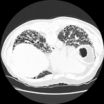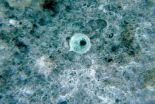(Press-News.org) Statins prevent cancer and reduce death from all causes in heart transplant recipients. The findings were independent of cholesterol levels.
The research was presented at the Heart Failure Congress 2012, 19-22 May, in Belgrade, Serbia. The Congress is the main annual meeting of the Heart Failure Association of the European Society of Cardiology.
Cancer is the leading cause of death late after heart transplantation. Skin cancer is particularly common, but solid organ cancers including colorectal cancer, prostate cancer and lymphoma also occur. The increased rate of cancer in heart transplant recipients may be related to the immune suppression of the patient.
Statins are immunomodulatory drugs and may benefit patients beyond their lipid lowering effects. The current study (abstract P306)
investigated the impact of statin therapy on the occurrence of cancer and death from all causes in heart transplantation recipients.
The study included all 255 patients who underwent heart transplantation at the University Hospital Zurich in Switzerland between 1985 and 2007 and were alive after the first year. The primary endpoint was the occurrence of any cancer and the secondary endpoint was overall survival.
During follow up, cancer was diagnosed in 108 patients (42%). Statins reduced the risk of any cancer by 65% (p=0.0001). Eight years after transplantation the cumulative incidence of tumours was 34% in patients not receiving a statin compared to 13% in patients receiving a statin (p=0.003). The benefit persisted at the 10 year (39% vs. 18%) and 12 year follow-up (42% vs. 22%).
Statin use was associated with improved cancer free and overall survival (both p=0.0001). The beneficial effect of statins on preventing cancer and reducing death from all causes was independent of patients' cholesterol levels. This suggests that the benefit of statins was due to their immunomodulatory effects.
Guidelines from the International Society for Heart & Lung Transplantation (ISHLT) recommend giving a statin to patients after heart transplantation to reduce graft atherosclerosis. This study shows that there are additional benefits to following that recommendation.
Lead author Dr Frank Enseleit, deputy director of heart failure and transplantation at University Hospital Zurich, says patients can safely begin statin therapy six months after transplantation and they should take the drug for the rest of their lives.
"We have shown that statin therapy prevents cancer in heart transplant recipients and it is known that statins also prevent graft atherosclerosis," he says. "We have to conclude that it should be a lifelong therapy in heart transplant recipients."
###
References
"Poster session 1: Heart transplantation" Poster Session – Poster Area
Sunday May 20, 8.30 am to 12.30 am. G M Froehlich, Statins reduce cancer risk and mortality in heart transplant recipients
Authors: ESC Press Office
Tel: +33 (0) 4 92 94 86 27
Fax: +33 (0) 4 92 94 86 69
Email: press@escardio.org
Notes to editor
For practical information about heart failure aimed at patients, families and caregivers, visit the HFA's Heart Failure Matters website at http://www.heartfailurematters.org/EN/Pages/index.aspx
Heart Failure2012 is the annual meeting of Heart Failure Association (HFA) a registered branch of the European Society of Cardiology (ESC). HeartFailure2012 takes place 19 to 22 May 2012 at Sava Centar, Belgrad – Serbia. The full scientific programme is accessible here.
About Heart Failure 2012 Registration
Online registration is now closed. On-site registration opens at 14:00 on 18 May.
About the venue
Sava Centar - Congress Culture & Business Center
Milentija Popovića 9 St, - 11070 Belgrade, Serbia
Tel: +381 11 220 60 00
Link to the abstract: http://spo.escardio.org/AbstractDetails.aspx?id=103138
Interviews can be arranged through the ESC press office before the event at press@escardio.org
Tel +33(0)4 92 94 8627
Contact on site : Celine Colas – ESC Press Office Coordinator - +33 6 22 41 84 92
About the European Society of Cardiology (ESC)
The European Society of Cardiology (ESC) represents more than 75,000 cardiology professionals across Europe and the Mediterranean. Its mission is to reduce the burden of cardiovascular disease in Europe.
About the Heart Failure Association (HFA)
The Heart Failure Association (HFA) is a registered branch of the ESC. Its aim is to improve quality of life and longevity, through better prevention, diagnosis and treatment of heart failure, including the establishment of networks for its management, education and research.
END
Madison, Wis. and San Francisco — Sleep-disordered breathing (SDB), commonly known as sleep apnea, is associated with an increased risk of cancer mortality, according to a new study.
While previous studies have associated SDB with increased risks of hypertension, cardiovascular disease, depression, and early death, this is the first human study to link apnea with higher rate of cancer mortality. Lead author Dr. F. Javier Nieto, chair of the department of population health sciences at the UW School of Medicine and Public Health, says the study showed a nearly five times ...
A combination of three drugs used worldwide as the standard of care for a serious lung disease puts patients in danger of death or hospitalization, and should not be used together to treat the disease, called idiopathic pulmonary fibrosis, according to the surprising results of a rigorous independent study.
The study, which will appear online May 20 in the New England Journal of Medicine to coincide with a presentation at the annual meeting of the American Thoracic Society, was conducted by IPF Clinical Research Network, funded by the National Heart, Lung, and Blood Institute ...
A team of researchers from UCSF and UC San Diego has identified an approved arthritis drug that is effective against amoebas in lab and animal studies, suggesting it could offer a low-dose, low cost treatment for the amoebic infections that cause human dysentery throughout the world.
Based on these results, the team has received Orphan Drug Status for the drug, known as auranofin, from the U.S. Food and Drug Administration, and has applied for approval to start clinical trials to treat both amebiasis and the parasite Giardia in humans.
The findings, which showed that ...
Research by a collaborative group of scientists from UC San Diego School of Medicine, UC San Francisco and Wake Forest School of Medicine has led to identification of an existing drug that is effective against Entamoeba histolytica. This parasite causes amebic dysentery and liver abscesses and results in the death of more than 70,000 people worldwide each year.
Using a high-throughput screen for drugs developed by the research team, they discovered that auranofin – a drug approved by the US Food and Drug Administration 25 years ago for rheumatoid arthritis – is very effective ...
Helen E. Davies, M.D., of the University Hospital of Wales, Cardiff, and colleagues compared the effectiveness of treatments to relieve breathing difficulties among patients with malignant pleural effusion (presence of fluid in the pleural cavity [space between the outside of the lungs and the inside wall of the chest cavity], as a complication of malignant disease). The treatments compared were chest tube drainage and talc slurry for pleurodesis (a procedure in which the pleural space is obliterated) vs. indwelling pleural catheters (IPCs).
Malignant pleural effusion ...
Peter B. Bach, M.D., of the Memorial Sloan-Kettering Cancer Center, New York, and colleagues conducted a systematic review to examine the evidence regarding the benefits and harms of low-dose computerized tomography (LDCT) screening for lung cancer, which is the leading cause of cancer death. "Most patients are diagnosed with advanced disease, resulting in a very low 5-year survival rate," the authors write. "Renewed enthusiasm for lung screening arose with the advent of LDCT imaging, which is able to identify smaller nodules than can chest radiographs."
For the review, ...
Margaret Rosenfeld, M.D., M.P.H., of Seattle Children's Hospital, and colleagues conducted a study to examine if hypertonic saline would reduce the rate of pulmonary exacerbations in children younger than 6 years of age with cystic fibrosis (CF). Inhaled hypertonic saline is recommended as therapy for patients 6 years or older with CF, but its efficacy has not been evaluated in patients younger than 6 years.
In the randomized trial, the active treatment group (n = 158) received 7 percent hypertonic saline and the control group (n = 163) received 0.9 percent isotonic saline, ...
To learn its signature melody, the male songbird uses a trial-and-error process to mimic the song of its father, singing the tune over and over again, hundreds of times a day, making subtle changes in the pitch of the notes. For the male Bengalese finch, this rigorous training process begins around the age of 40 days and is completed about day 90, just as he becomes sexually mature and ready to use his song to woo females.
To accomplish this feat, the finch's brain must receive and process large quantities of information about its performance and use that data to precisely ...
A new study led by researchers at Hospital for Special Surgery identifies the mechanism by which a cell signaling pathway contributes to the development of rheumatoid arthritis (RA). In addition, the study provides evidence that drugs under development for diseases such as cancer could potentially be used to treat RA. Rheumatoid arthritis, a systemic inflammatory autoimmune disease that can be crippling, impacts over a million adults in the United States.
"We uncovered a novel mechanism by which the Notch pathway could contribute to RA, said Xiaoyu Hu, M.D., Ph.D., a ...
Internationally recognized fitness enthusiast, Flavia Del Monte, has spent years helping women learn how their bodies work, proper nutrition for women and how to exercise in a way that benefits women. As the founder of Flavilicious Fitness she has been creating workout and nutrition programs specifically designed for the needs of women.
Flavia Del Monte's newest workout and nutrition program, Curvalicious, is the first to target metabolic fat loss while increasing both Myogenic and Neurogenic muscle tone. Myogenic muscle tone is the residual tension in a muscle at rest. ...



